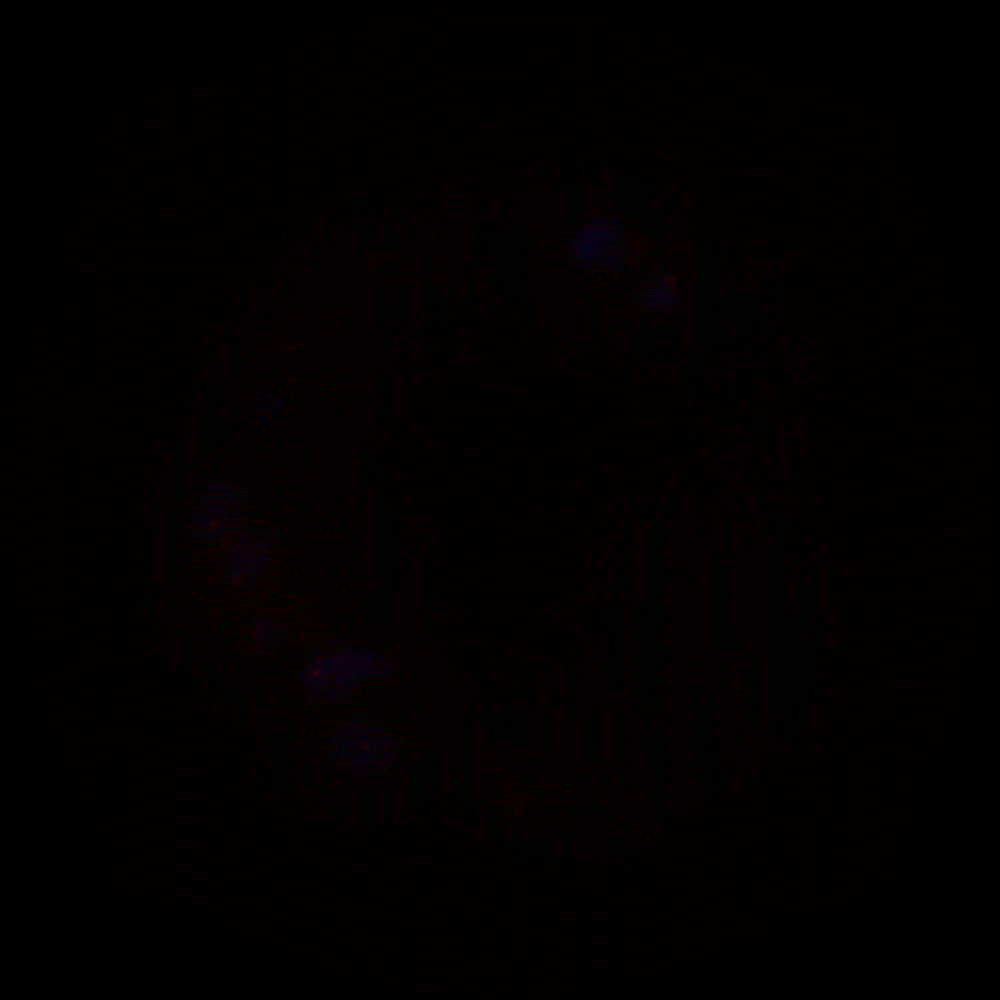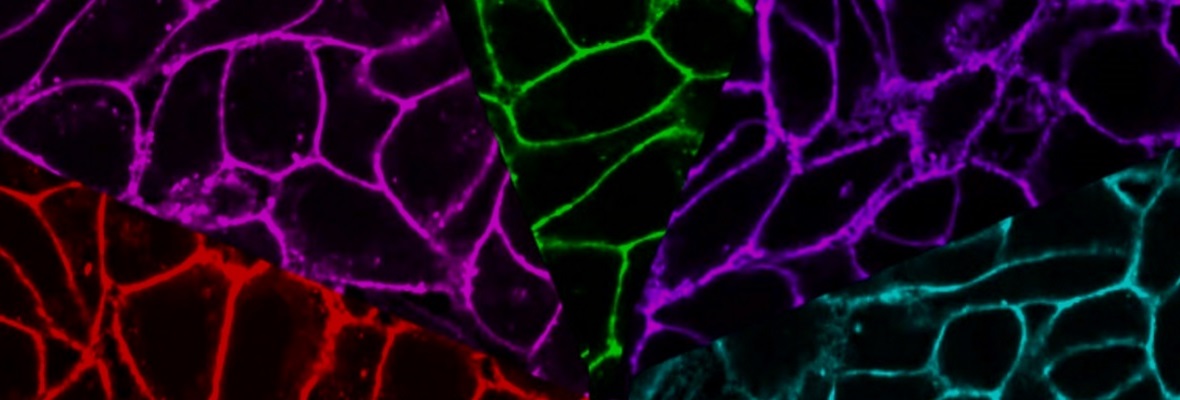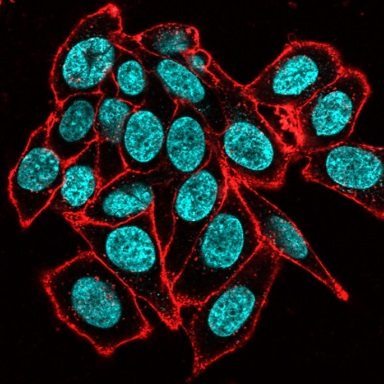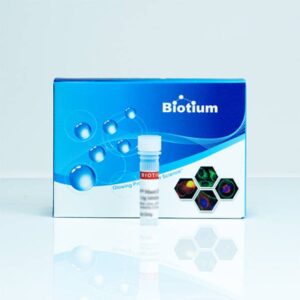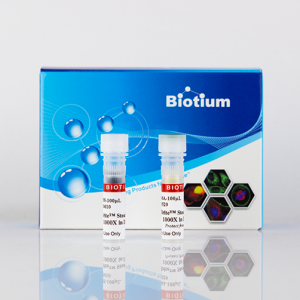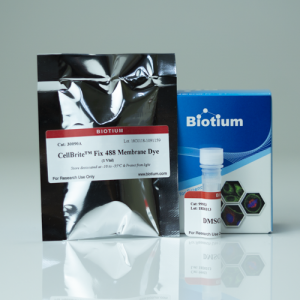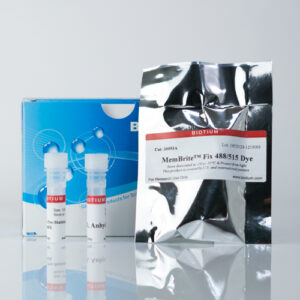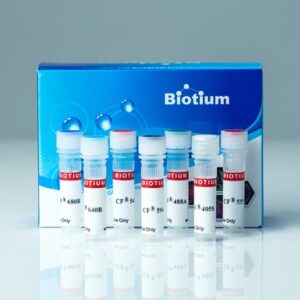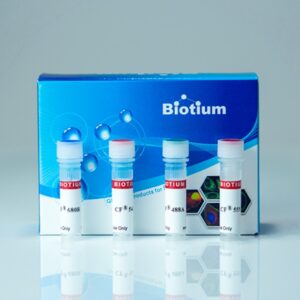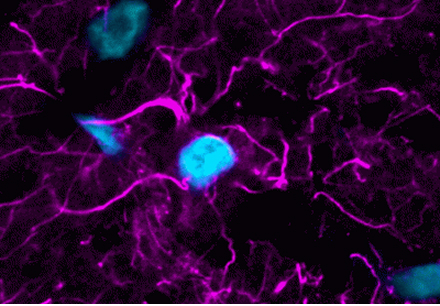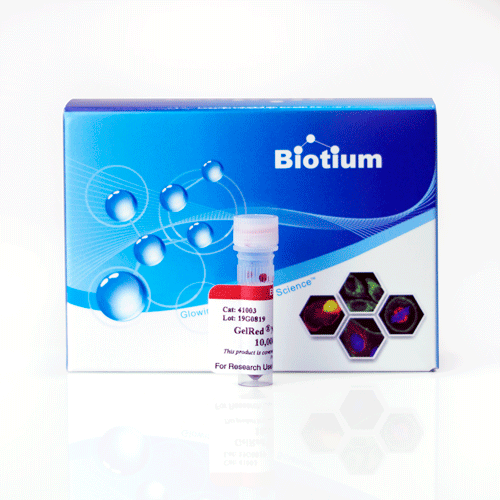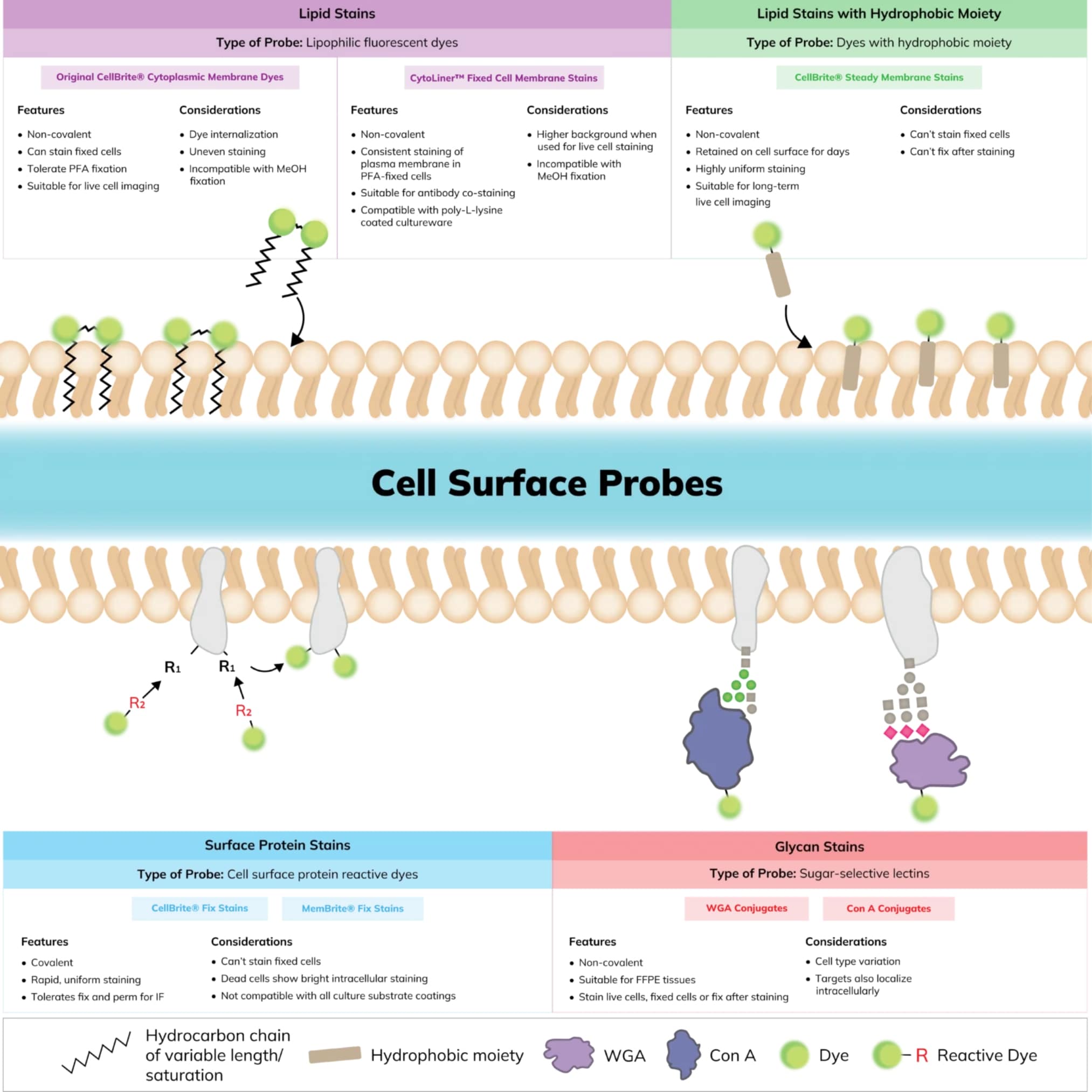
Find a Membrane or Surface Stain for Your Workflow
Researchers frequently use a plasma membrane dye to label cell surfaces or to visualize cellular boundaries or cell morphology in multi-color fluorescence imaging. Biotium offers a number of traditional and novel membrane dyes that are designed for convenient labeling of live cells, fixed cells, or for fixation and subsequent immunostaining. Many of our stains are available in numerous colors and can be paired with other cellular stains. See below to find the right stain for you based on your application and experimental details.
- Stain live cells
- Wash1
- Image live cells
Recommended products:
- CellBrite® Steady Membrane Stains1
- 1Washing is optional for CellBrite® Steady Stains when imaged by confocal. The stains can be used to image cell surface in culture for days.
- Stain live cells
- Fix cells
- (Optional) Proceed to additional staining
- Stian live cells
- Fix cells
- Permeabilize cells
- (Optional) Proceed to additional staining
- Fix cells
- Stain cells
Recommended products:
- CytoLiner™ Fixed Cell Membrane Stains2
- WGA Conjugates
- ConA Conjugates
- 2Formaldehyde fixation recommended for CytoLiner™ Fixed Cell Membrane Stains
Compare Membrane and Cell Surface Stains
| Stain | Dye transfer between cells | Non-toxic | Stains yeast | Stains bacteria | Stain after fixing2 | Fix after staining | Tolerates detergent / MeOH fix? | Color selection | Pros & Cons |
|---|---|---|---|---|---|---|---|---|---|
| CytoLiner™ Fixed Cell Membrane Stains | Yes | Yes1 | Yes | No | Yes3 | Yes5 | No6 | 6 colors (blue to NIR) | Pro: Specifically formulated for bright & uniform membrane staining in fixed cells Pro: Suitable for antibody co-staining Con: High background in live cells |
| CellBrite® Steady Membrane Staining Kits | Yes | Yes | No | No | No | No | No | 8 colors (blue to NIR) | Pro: Image live cell surface for days Pro: Enhancer masks intracellular staining Pro: Fast, even staining in medium Con: Does not tolerate fixation |
| GlycoLiner™ Cell Surface Glycoprotein Labeling Kits | Minimal | Yes1 | Yes | Gram+ Yes Gram- Weak | No | Yes | Yes | 5 colors (blue to NIR) | Pro: Rapid, uniform staining Pro: Fix & perm cells for IF Pro: Less cytoplasmic background in dead cells Con: Can't stain fixed cells |
| CellBrite® Fix Membrane Stains | Minimal | Yes1 | Yes | Yes | No | Yes | Yes | Green, red, & far-red | Pro: Rapid, uniform staining Pro: Wash after stain optional Pro: Fix & perm cells for IF Pro: Stains yeast & bacteria Con: Can't stain fixed cells |
| MemBrite® Fix Cell Surface Staining Kits | Minimal | Yes1 | Yes | Gram+ only | No | Yes | Yes | 8 colors (blue to NIR) | Pro: Rapid, uniform staining Pro: Fix & perm cells for IF Pro: Great color selection Pro: Stains yeast Con: Can't stain fixed cells |
| CF® Dye WGA Conjugates | Possible | Possibly toxic4 | Bud scars | Fluorescent Gram stain | Yes | Yes | Yes | 13 colors (UV to NIR) | Pro: Fix before or after staining Pro: Fluorescent Gram stain Pro: Yeast bud scar stain Pro: Great color selection Con: May vary among cell types |
| CF® Dye Con A Conjugates | Possible | Possibly toxic4 | Yes | Reported to stain biofilms | Yes | Yes | Yes | 10 colors (UV to NIR) | Pro: Fix before or after staining Pro: Great color selection Pro: Stains yeast Con: May vary among cell types |
| CellBrite® Cytoplasmic Membrane Dyes | Minimal | Yes1 | No | No | Yes3 | Yes3 | No | 8 colors (blue to NIR) | Pro: Fix before or after staining3 Con: Uneven live cell staining Con: Poor tolerance for MeOH/detergent |
| 1. Membrane and cell surface labels will be internalized by endocytosis in live cells over time. 2. Intracellular membranes may be labeled in fixed cells. 3. Formaldehyde fixation only. 4. Lectins may be toxic or stimulatory to live cells depending on cell type. 5. CytoLiner™ Fixed Cell Membrane Stains may have higher background if used to stain live cells before fixation than when used to stain cells after fixation. 6. Mild permeabilization with 0.1% Triton® X-100 is recommended, see product information sheet for more info. |
|||||||||
Which Membrane Stain is Right for Your Experiment?
Watch our video where Technical Applications Scientist II, Jacqueline Steenhuis PhD answers your top questions about Biotium’s various membrane stains for fluorescence microscopy.
For additional support or product recommendations, contact us at techsupport@biotium.com.
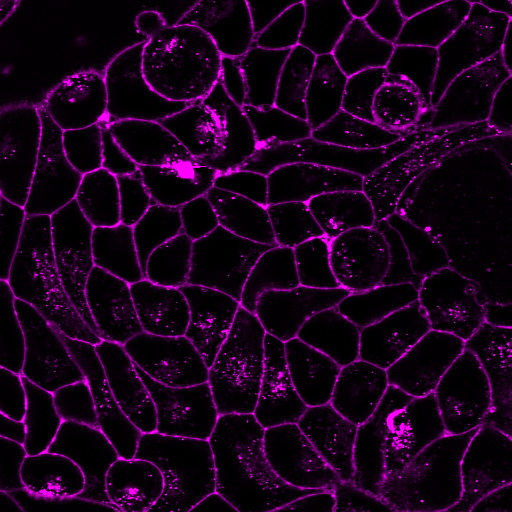
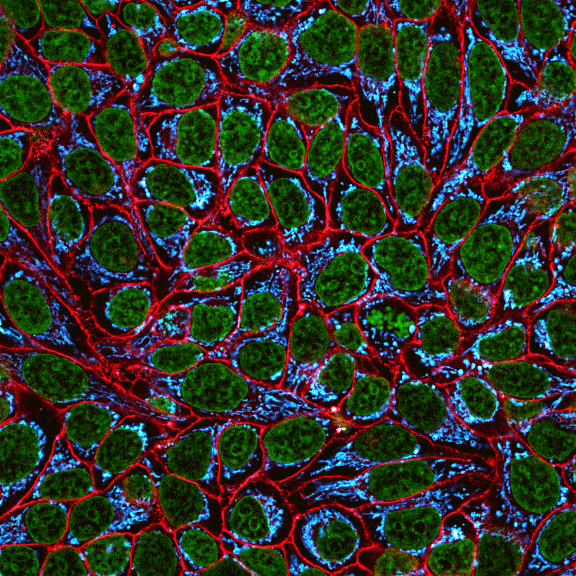
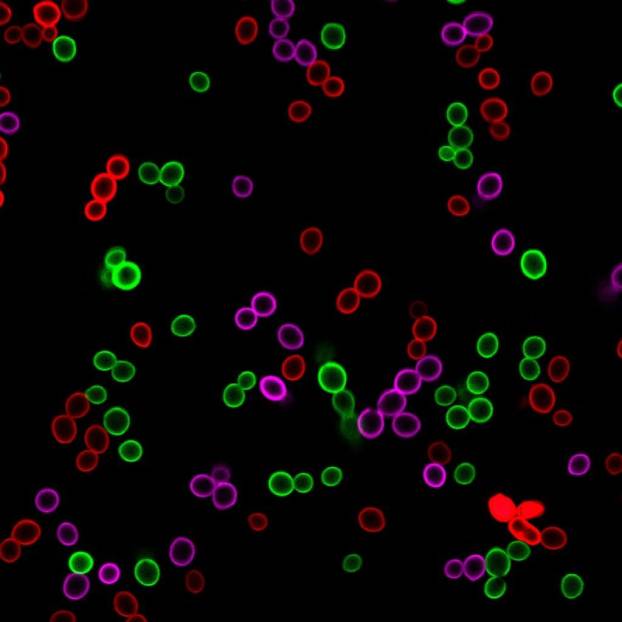

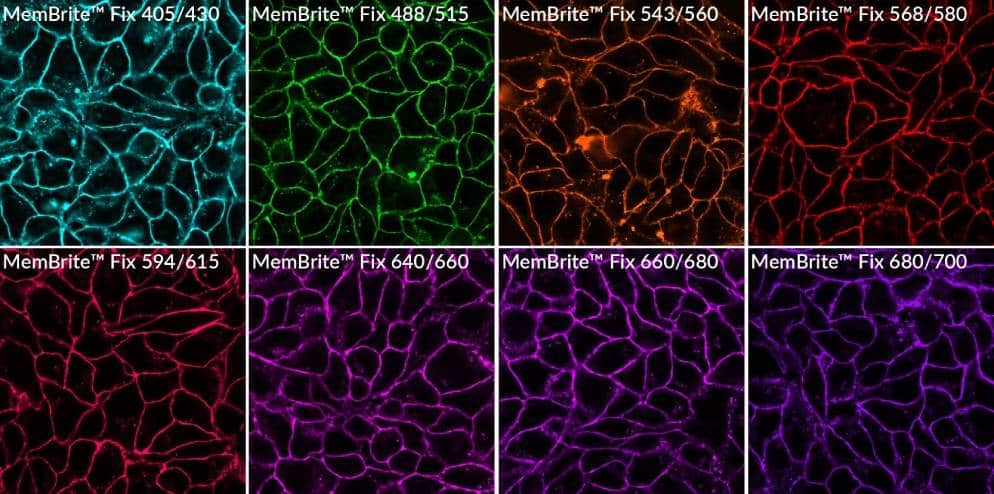
Stain Cell Surfaces in Whole Organisms
MemBrite® Fix stains have been used to label cell surfaces in whole organisms. In the following figures provided by Patrick Lemaire’s lab of CRBM (Centre de Recherche en Biologie cellulaire de Montepellier), MemBrite® Fix 543/560 was used to stain whole embryos of the tunicate Phallusia mammillata followed by downstream hybridization chain reaction fluorescent in situ hybridization (HCR-FISH) for detection of a RNA transcript. Cell boundaries were clearly labeled through the entirety of the Z-stack from the animal hemisphere to the vegetal hemisphere of the embryo.

